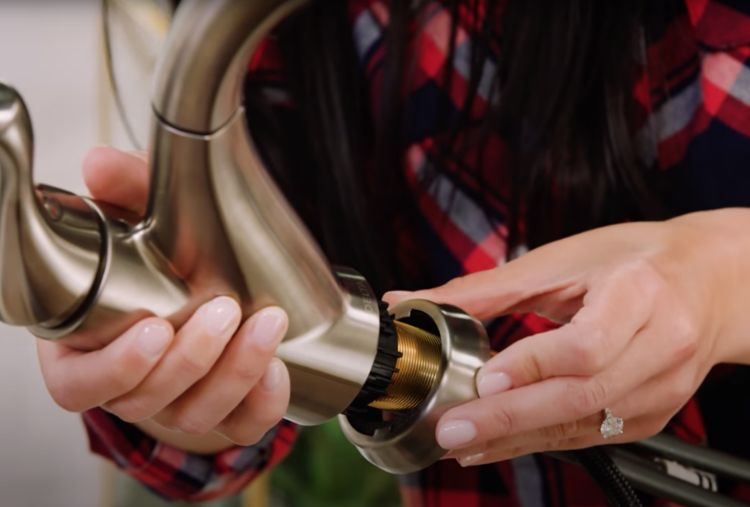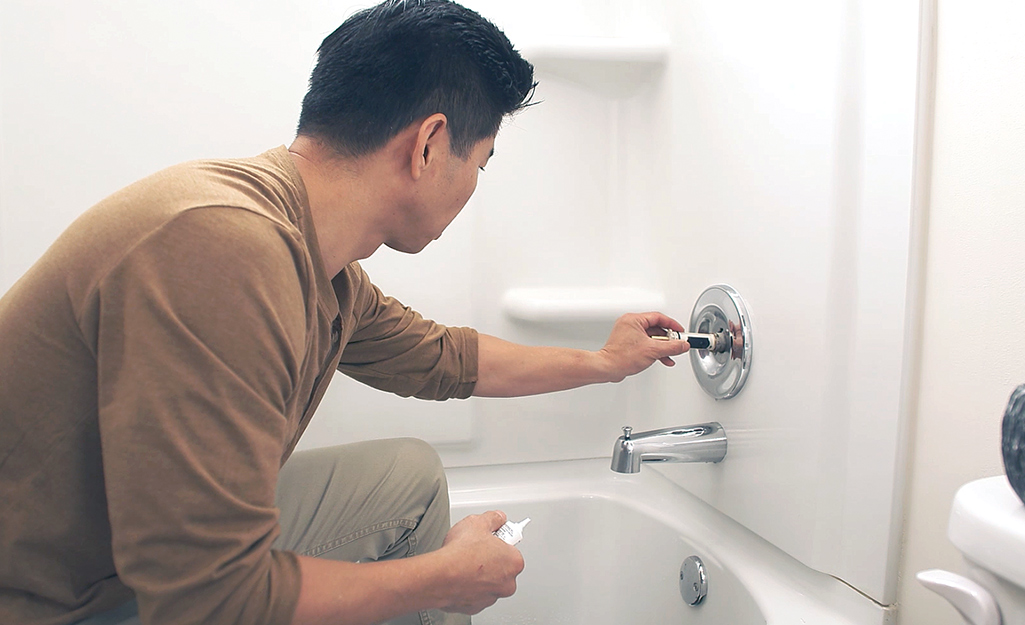Your Importance of Resolving a Malfunctioning Faucet
Your Importance of Resolving a Malfunctioning Faucet
Blog Article
Were you in search of critical info around Should I Repair or Replace a Leaky Faucet??

Trickling faucets might appear like a small aggravation, but their effect goes beyond just the aggravation of the audio. From wasting water to sustaining unnecessary economic expenses and health and wellness threats, neglecting a dripping tap can cause various effects. In this article, we'll explore why it's critical to address this common house concern quickly and effectively.
Wastefulness of Water
Ecological Impact
Leaking faucets add considerably to water waste. According to the Epa (EPA), a single faucet leaking at one drip per secondly can waste greater than 3,000 gallons of water each year. This not only stress water sources however additionally affects environments and wildlife depending on them.
Financial Costs
Enhanced Water Expenses
Past the ecological effect, trickling taps can inflate water costs considerably. The built up waste in time equates into greater utility costs, which might have been prevented with prompt fixings.
Prospective Building Damage
Additionally, long term leaking can cause harm to fixtures and surface areas surrounding the tap. Water accumulation can cause discoloration, rust, and also structural problems if left unattended, causing added fixing expenses.
Wellness Issues
Mold And Mildew and Mold Growth
The continuous existence of moisture from a leaking faucet develops a suitable setting for mold and mildew and mildew development. These fungi not just jeopardize interior air top quality yet likewise posture wellness dangers, especially for individuals with breathing problems or allergic reactions.
Waterborne Conditions
Stagnant water in trickling faucets can become a breeding ground for microorganisms and other pathogens, raising the danger of waterborne diseases. Pollutants such as Legionella microorganisms prosper in stationary water, potentially causing serious health problems when consumed or inhaled.
DIY vs. Expert Fixing
Advantages and disadvantages of Do It Yourself Fixing
While some might try to fix a dripping faucet themselves, DIY fixings come with their own collection of challenges. Without proper knowledge and tools, do it yourself attempts can exacerbate the problem or result in insufficient fixings, prolonging the trouble.
Benefits of Working With an Expert Plumber
Employing a professional plumber makes sure that the underlying reason for the trickling tap is addressed effectively. Plumbers have the proficiency and tools to detect and fix tap problems effectively, conserving time and minimizing the danger of additional damage.
Step-by-Step Overview to Repairing a Dripping Faucet
Devices Needed
Prior to trying to repair a leaking tap, collect the required devices, consisting of a flexible wrench, screwdrivers, substitute components (such as washers or cartridges), and plumber's tape.
Typical Tap Issues and Their Solutions
Identify the type of faucet and the specific concern creating the drip. Usual troubles include worn-out washers, rusty shutoff seats, or defective O-rings. Refer to producer instructions or on-line tutorials for detailed guidance on fixings.
Safety nets
Regular Upkeep Tips
To avoid dripping taps, carry out regular maintenance such as cleansing aerators, examining for leakages, and changing damaged parts promptly. In addition, think about installing water-saving gadgets or upgrading to much more effective components.
Relevance of Prompt Repairs
Dealing with dripping faucets as quickly as they're noticed protects against additional water wastage and possible damages, inevitably conserving both water and money in the future.
Impact on Building Value
Assumption of Well-Maintained Residential Property
Preserving a property in good condition, including attending to upkeep problems like leaking faucets, boosts its perceived worth and worth among prospective customers or lessees.
Impact on Resale Value
Residences with well-kept plumbing components, consisting of taps, command greater resale worths in the property market. Attending to leaking faucets can contribute to a favorable perception throughout property assessments and settlements.
Environmental Duty
Specific Contribution to Preservation
Taking responsibility for fixing leaking faucets aligns with more comprehensive efforts toward water conservation and environmental sustainability. Every person's actions collectively make a significant influence on protecting valuable resources.
Lasting Living Practices
By prioritizing prompt repair services and embracing water-saving habits, people contribute to lasting living practices that profit both present and future generations.
Conclusion
Addressing a trickling tap surpasses simple benefit; it's a crucial action toward preserving water, minimizing monetary prices, and guarding health and wellness and home. Whether via DIY repair work or professional support, doing something about it to deal with leaking taps is a small yet impactful means to promote liable stewardship of resources and add to a healthier, more lasting future.
Most Common Reasons for a Leaky Faucet and How to Stop the Drip
Whether it’s your kitchen faucet leaking or a bathroom faucet leaking, one leaky faucet can waste anywhere from three to 30 gallons of water every single day. If the constant drip-drip-drip doesn’t get your attention, your water bill will. The good news is that, by following a few simple steps, chances are pretty good you can fix the problem yourself.
Why is it dripping?
Before you start taking things apart, let’s break down some of the most common causes of a leaky faucet.
Bad O-ring.
A cartridge is a valve that controls the flow of water into the faucet spout. On cartridge faucets there’s an O-ring—the little disc attached to the stem screw that holds the faucet handle in place. If it’s loose or worn-out, it can cause your sink handle to leak. Of course, the cartridge itself could be worn out. If that’s the case, make sure you replace it with the exact same kind.
Corroded valve seat.
The valve seat connects the faucet and the spout. If the leak seems to be coming from the spout, it might be because a buildup of water sediment has corroded the valve seat.
Worn-out washers or seals.
A leaky spout could be caused by a bad washer that rests against the valve seat. It’s just a matter of time before friction takes its toll. It could also be the wrong size washer or one that’s been installed incorrectly. Water sediments can also corrode inlet and outlet seals.
Water pressure.
If the faucet only drips now and then, or when you turn the handles a certain way, you should probably check your home’s water pressure.
Loose or broken parts.
The adjusting ring and packing nuts in the stream screw can become loose over time, causing your sink handle to leak. Try tightening or replacing the packing nut. If the leak is coming from the pipes underneath the sink, you probably have a broken pipe or fitting. If that’s the case, you should definitely call a plumber.
Know your faucet.
Faucets come in a variety of types. Each one has its own assembly—and its own possible causes of leaks. Learning about the four most common kinds of faucets will help you know how to take them apart and make any repairs.
How to stop a leaky faucet
Fixing that leaky faucet doesn’t have to take a lot of time, money, or expertise. It’s usually a simple matter of replacing a worn-out washer or gasket, a loose O ring, or another part. Chances are really good you can do this yourself if you follow these simple steps.
Shut off the water.
Before you tackle the faucet, cut off the water supply to the sink. There should be one valve for hot and one for cold. Hand-turn them clockwise with your hands till they close. If there are no valves under the sink, head to the basement and shut off the main water supply to the house. Then turn on the faucet until it empties out the water that’s still in the line and you’re ready to start. It’s a good idea to cover the sink drain with a plug or a rag so you don’t lose any small pieces and parts while you’re working.

I came across that post about while doing a search on the search engines. Appreciated our blog? Please share it. Let somebody else find it. Thank-you for going through it.
Report this page